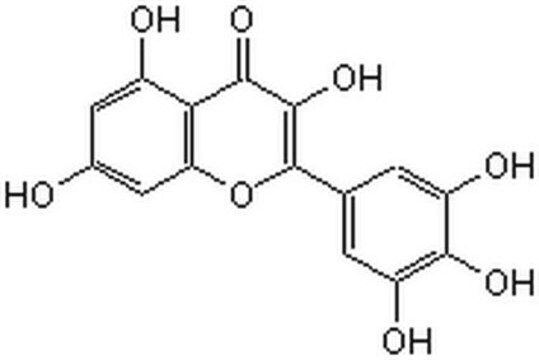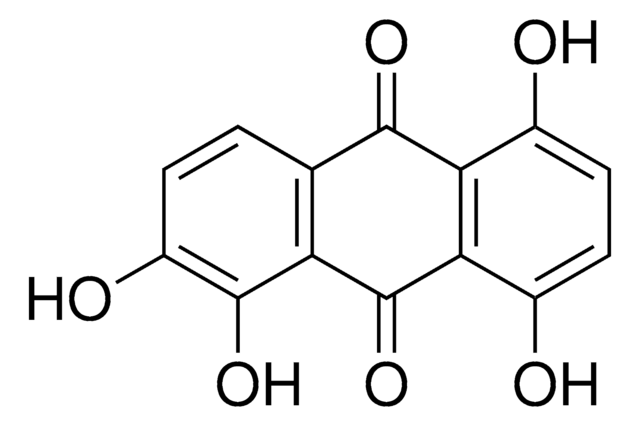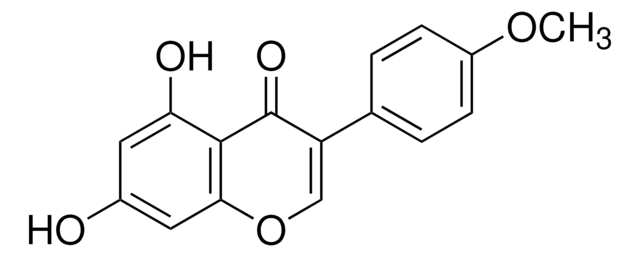M4008
Morin hydrate
powder
Synonym(s):
2′,3,4′,5,7-Pentahydroxyflavone
About This Item
Recommended Products
form
powder
color
yellow
solubility
methanol: 50 mg/mL
SMILES string
O.Oc1ccc(c(O)c1)C2=C(O)C(=O)c3c(O)cc(O)cc3O2
InChI
1S/C15H10O7.H2O/c16-6-1-2-8(9(18)3-6)15-14(21)13(20)12-10(19)4-7(17)5-11(12)22-15;/h1-5,16-19,21H;1H2
InChI key
MYUBTSPIIFYCIU-UHFFFAOYSA-N
Looking for similar products? Visit Product Comparison Guide
Application
- to investigate its antitumor functionality using cell viability and apoptosis assay in human cancer cell lines.
- as a fluorescence stain to detect aluminum in motor neurons and lumbar cord.
- to study its protective effect on neuronal hearing loss and on neural stem cells (NSCs) proliferation and differentiation
Biochem/physiol Actions
Signal Word
Warning
Hazard Statements
Precautionary Statements
Hazard Classifications
Eye Irrit. 2 - Skin Irrit. 2 - STOT SE 3
Target Organs
Respiratory system
Storage Class Code
11 - Combustible Solids
WGK
WGK 3
Personal Protective Equipment
Certificates of Analysis (COA)
Search for Certificates of Analysis (COA) by entering the products Lot/Batch Number. Lot and Batch Numbers can be found on a product’s label following the words ‘Lot’ or ‘Batch’.
Already Own This Product?
Find documentation for the products that you have recently purchased in the Document Library.
Customers Also Viewed
Articles
Antioxidants protect biological systems from oxidative damage produced by oxygen-containing free radicals and from redoxactive transition metal ions such as iron, copper, and cadmium.
Our team of scientists has experience in all areas of research including Life Science, Material Science, Chemical Synthesis, Chromatography, Analytical and many others.
Contact Technical Service











![[3,4-Toluenedithiolato(2-)]zinc hydrate](/deepweb/assets/sigmaaldrich/product/structures/546/334/10d7d6f5-6fc5-4621-b790-aa27cad298a1/640/10d7d6f5-6fc5-4621-b790-aa27cad298a1.png)
